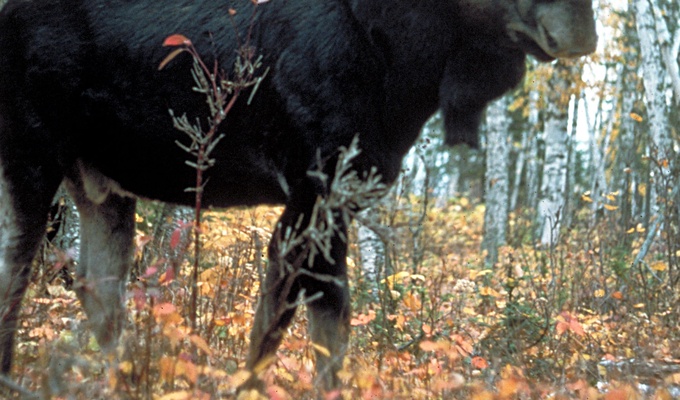The moose or elk is a member of the New World deer subfamily and is the only species in the genus Alces. It is the largest and heaviest extant species in the deer family. Most adult male moose have distinctive broad, palmate antlers; most other members of the deer family have antlers with a dendritic configuration. Moose typically inhabit boreal forests and temperate broadleaf and mixed forests of the Northern Hemisphere in temperate to subarctic climates. Hunting and other human activities have caused a reduction in the size of the moose's range over time. It has been reintroduced to some of its former habitats. Currently, most moose occur in Canada, Alaska, New England, New York State, Fennoscandia, the Baltic states, Poland, Kazakhstan, and Russia.
Its diet consists of both terrestrial and aquatic vegetation. Predators of moose include wolves, bears, humans and (rarely) wolverines. Unlike most other deer species, moose do not form herds and are solitary animals, aside from calves who remain with their mother until the cow begins estrus (typically at 18 months after birth of the calf), at which point the cow chases them away. Although generally slow-moving and sedentary, moose can become aggressive, and move quickly if angered or startled. Their mating season in the autumn features energetic fights between males competing for a female.
